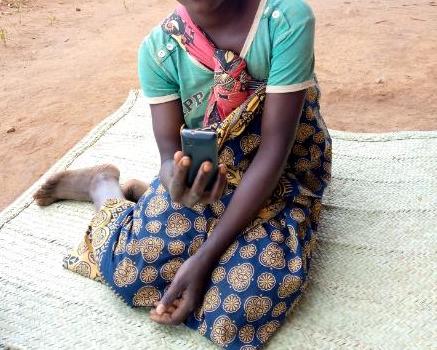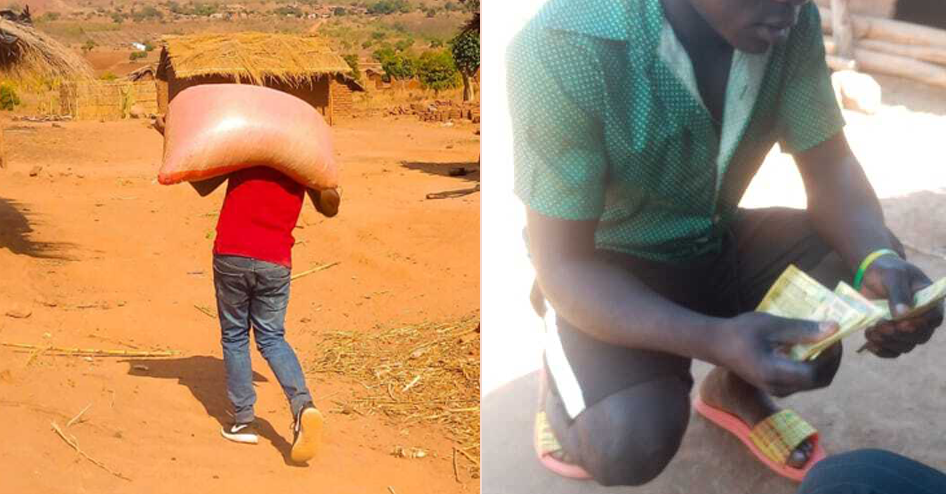So far in 2021, GiveDirectly has delivered $106.3M to 431K people in poverty across seven countries in Africa. We estimate 0.23% of those funds was lost to theft, bribes, and imposters. Every major nonprofit experiences losses from external fraud, but few rigorously investigate and safeguard against it; fewer still openly report on it. We believe in being transparent with these details and sharing the process that prevents and investigates these losses.
Our Recipient Advocacy team detects and investigates fraud cases
We’ve had internal audit teams with a direct reporting line to our Chief Operating Officer since 2016. 80 GiveDirectly team members (out of 750) are focused exclusively on risk assessments, safeguarding the households receiving transfers, and auditing the work of our enrollment team. When a village receives their first payment, Recipient Advocacy (R.A.) officers visit to assure they have not suffered any losses or witnessed anything suspicious during the process, conducting randomly selected in-depth interviews. Beyond that, each of our enrollment sub-teams are kept independent of each other, and we maintain in-country call centers for follow-ups and fielding questions, complaints, and tips. Overall, 99% of people enrolled in our standard programs receive at least one proactive follow up this year.
Because safeguarding and fraud cases can involve other GiveDirectly staff, there’s a firewall between the two teams. R.A. officers use pseudonyms in all their operations; internal and external. They work out of a secret location, and they do not wear GiveDirectly branding. It’s worth noting that less than a quarter of a percent of our 2021 losses ($504) came from cases involving our own staff or operational partners.
This sort of team is exceedingly rare in the nonprofit sector. From discussions at roundtables with other organizations in the region, we’ve found many have financial audit teams looking for incongruities in spreadsheets and receipts, but almost none staff localized, anonymous teams that audit their operations. Notable exceptions include the I.R.C. and the U.N., which run robust ethics and compliance audits and share their reports publicly.
We’ve lost <0.25% since we started tracking
First, let’s define these terms:
- Bribes occur when someone coerces a recipient to give transfer funds or property purchased with funds as a payback for a falsely-represented favor the recipient is receiving (e.g. a mobile money agent demands a bribe in order to cashout).
- Theft is when someone takes transfer funds or property bought with funds from a recipient without consent (e.g. robberies or wire fraud). This often happens through scams, which we’ll describe below.
- Imposters are when someone ineligible for our programs enrolls under false pretenses (e.g. pretending to head a household in a village we’re enrolling). This is a loss to GiveDirectly, not to recipients.
As a percentage of the money we delivered to people in poverty, our losses are 0.23% this year, compared to 0.18% in 2020. Without other comparable non-profit’s loss statistics to benchmark off of, we set an internal target of losing less than half a percent annually. Since we’ve started tracking, we’ve lost less than half that target annually.
The increase observed this year is likely a result of better detection of theft & bribes than of rising rates — we recently added a community intelligence sub-team to conduct more proactive safeguarding checks. This new team, working across 5 countries, reported 38 cases that presumably would not have been discovered without their additional work.
Anyone can solicit a bribe or steal from a recipient including neighbors, family, local leaders, local businesses, or partners/staff. The chart below shows the breakdown by perpetrator for this year to date.
We believe there’s value in having robust practices to track & monitor for fraud — ultimately to maximize our impact. Strong fraud detection both protects recipients and ensures a larger share of each dollar reaches recipients. Imposter cases are often discovered during R.A. audits after enrollment or the first transfer. We then un-enroll the imposter, preventing additional losses.
For theft and bribes, over half of these losses are from “unknown” cold cases – the recipient is unable to identify the perpetrator. To give you a sense of what’s involved in investigating and resolving the other 43%, we’ll highlight one of our more recent ones:
The story of one case: 200 lbs of stolen maize in Malawi
Note: All names below have been anonymized & photos have been cropped to protect privacy.
Mary is enrolled
This summer, “Mary,” a 21 year old subsistence farmer in Mulanje, Malawi, was registered to receive $800 as part of GiveDirectly’s standard poverty alleviation program. Each household in her village was signed up to receive ~$800 in two installments. Mary, a single mother of an infant, was enrolled as the head of her household.
Mary elected to have her uncle, who lives in a nearby house, help her enroll because she was not experienced with mobile phones. Trustees like her uncle are co-enrolled when a recipient wants assistance participating. For his help, Mary offered her uncle ~$15 as a token of appreciation. She kept her new phone but her uncle did not share with her the pin code to her new Airtel mobile money account.

Mary reports theft through our hotline
After the village received their first transfers in July, Mary called our recipient hotline. She informed our team that her uncle never gave her pin to her and only gave her half of the first transfer, keeping the rest for himself.
The R.A. team investigates
Our R.A. team visited her village and talked separately with Mary, her village chief, and her uncle. Her uncle admitted to her claims and agreed to cooperate. Her uncle was able to return ~$65 and two 100 lbs. bags of maize valued at $15 each; and he agreed to return the remaining $105 in a week. GiveDirectly officers helped Mary privately reset her pin number and carried the bags of the maize to her house. Her brother counted out the $60 in the presence of the village chief.
The next week, Mary’s uncle called our team to confirm he had the remaining $120. The team returned to the village to witness and facilitate the final handover and ensure there was no bad blood between the two. Mary’s final $400 transfer last month went smoothly.

In this case, we recovered the funds; that is rare.
Mary’s story is rare — this year, we’ve only recovered an estimated 9% of funds lost to recipients. Does the value recovered outweigh the cost of investigating these cases? From a simple dollar-for-dollar amount, certainly not. However, the existence of a rigorous investigations team helps deter staff and partner fraud. It also detects trends and types of fraud, allowing us to systematically prevent them for future programs. For example, seeing a rise in overcharging of cashout fees by mobile money agents in Rwanda led us to educate recipients on the expected transaction fees ahead of their first transfer. This information empowered them to refuse fraudulently high charges.
We cannot always recover their losses, but we do what we can to give recipients recourse. However, when we cannot recover funds, we do not give the recipient additional money as there is often not enough conventional ‘evidence’ to verify claims. Changing these standards would potentially create a moral hazard by incentivizing the reporting of losses that did not occur.
Theft happens to every non-profit — responding matters
Theft from nonprofits or people in poverty can be disheartening, but it’s important to note these are mostly what we’d consider to be “white-collar” crimes — skimming, scamming, and fraud. Rarely do they involve threats or violence.
When there is a chance to profit, there will always be people that take their chance. These things happen for every major nonprofit that relies on person-to-person contact for distribution, but many do not proactively monitor or investigate them. It can be easier not to know. If you look under the bed, you may find an unpleasant mess, so why look at all? We do because when donors entrust us with dollars meant for people in poverty, it’s our obligation to deliver that value as effectively as possible and ensure recipients have the dignity of an investigation.

This is a commendable effort! However, it is unfortunate that detected fraud cases and actual fraud cases are conflated throughout the article.
By your own admission, the increase from 0.18% to 0.23% is mostly the result of improved detection. Such a large improvement in a one-year span suggests there is still a lot of low-hanging fruit. Because of that, fraud is probably much more common than reported here.
It is perfectly normal not to know how much money you are losing to fraud! I have spoken to fraud detection folks at an insurance company as well as ex-forensics. Established large organizations don't have reliable estimates either. Detected fraud cases do have a use, of course, as a lower bound on actual fraud cases.